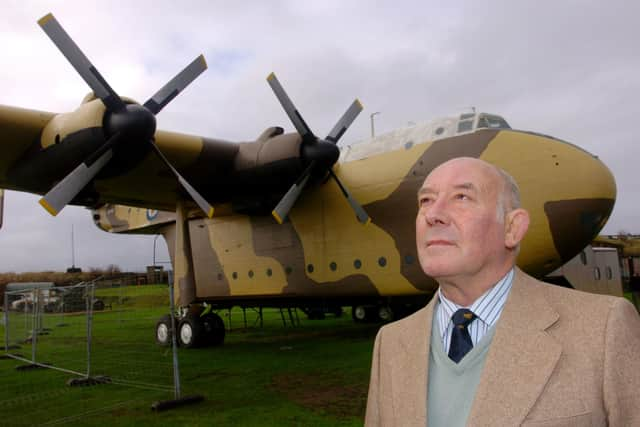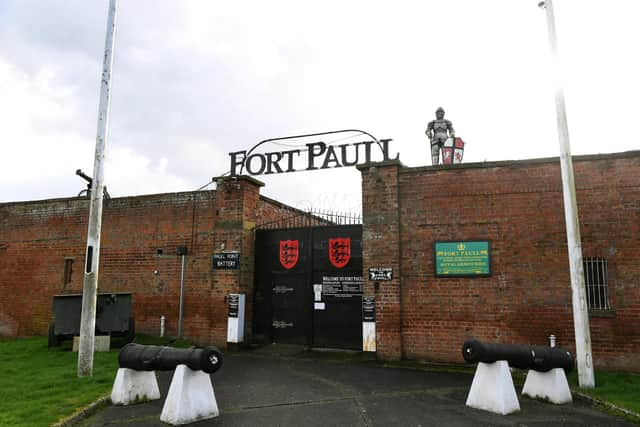Fort Paull: Plans to turn Napoleonic fort and former museum in Yorkshire into caravan site are refused
East Riding Council’s Eastern Area Planning Committee voted unanimously today (Monday, March 11) to reject plans to convert Fort Paull, in Holderness, into a 64-pitch caravan park.
Fort owner Brian Rushworth told councillors they were attempting to find a use for the building after the death of his wife and ageing staff made the former museum there unviable.
Advertisement
Hide AdAdvertisement
Hide AdBut Yorkshire Wildlife Trust planning specialist Ellen Milner said visitors walking their dogs could disturb animals and birds in Paull Holme Strays, one of the area’s most important nature reserves.


It comes as plans were first lodged with East Riding Council in 2021 after the museum and visitor centre at Fort Paull, in Battery Road, Paull, closed the previous year.
The fort’s museum opened in 2000 and showcased the history of the site which dates back to Tudor times and exhibits covering the last 500 years of war and conflict.
Plans for the caravan site proposed keeping parts of the site open to the public so people could continue to visit it.
Advertisement
Hide AdAdvertisement
Hide AdMatthew Green, director of the Green Planning Studio, previously said that the plans were a sensible proposal to preserve a heritage asset.


They were backed by Historic England as a way to keep the site in use.
But four people objected to the plans along with Paull Parish Council which claimed sheer drops within its boundary posed a safety risk to guests and visitors.
Council planning officers recommended that it be refused.
Mr Rushworth told the committee a sustainable use for the site needed to be found to ensure it could survive.
Advertisement
Hide AdAdvertisement
Hide AdThe owner said: “I lost my wife who ran the fort with me and the museum staff are all ageing, so it’s unable to carry on as a museum and we’re desperately trying to find something that’s non-intrusive to the monument.
“We think this concept of a holiday park would produce less visitors and would be less damaging to the environment around the fort, it’s the best way to preserve the fort for future generations.
“We desperately need to find a use for it, otherwise it will fall into rack and ruin.”
But Ms Milner said visitors using a public footpath which runs through the Paull Holme Strays reserve risked disturbing birds trying to feed and roost.
Advertisement
Hide AdAdvertisement
Hide AdThe planning specialist said: “The disturbance comes from dogs when they’re allowed to run freely, we’ve tried to educate our members about this but we can’t enforce keeping dogs on leads on a public right of way.
“Birds change their behaviour when they’re disturbed, it takes time away from feeding and roosting and ultimately reduces their chances of survival.
“We had discussions with the developer but they broke down in 2023 after a satisfactory outcome was not reached.”
Committee member Cllr Denis Healy said better uses for the site than a caravan park was another concern.
Advertisement
Hide AdAdvertisement
Hide AdThe councillor said: “This is a historic heritage asset dating back to Tudor times.
“It could be put to better use than as a caravan site, with the greatest respect to the owner.
“This is a site that’s seen historical events take place, it deserves better than this.”
Fortifications at the site were first built in 1542 during Henry VIII’s reign and additions were made under Charles I’s rule during the English Civil War.
Advertisement
Hide AdAdvertisement
Hide AdThe fort which exists today was completed in 1864 and was one of 10 ‘Palmerstone Forts’ built across the north east, named after then Prime Minister Lord Palmerstone.
Fort Paull housed artillery until 1915 when it became the home of the Humber Fire Command and was also used for gun training until the mid-1930s.
It stored ammunition during the Second World War and supplies for shipping to the Soviet Union.
The Ministry of Defence sold the site in 1960 and the Friends of Fort Paull group took it on in 1964 and began restoring it to open it to the public.